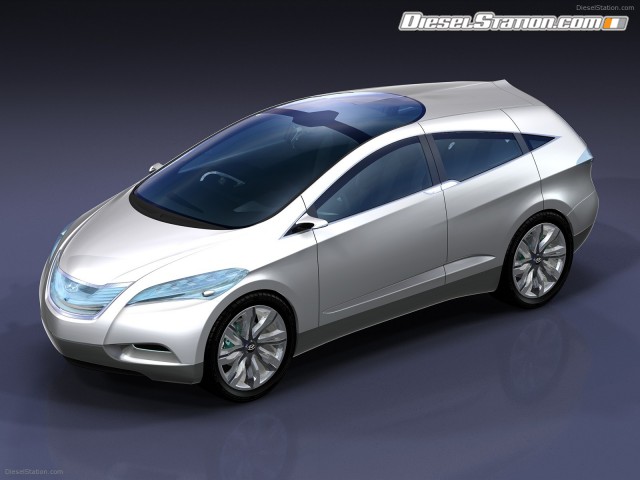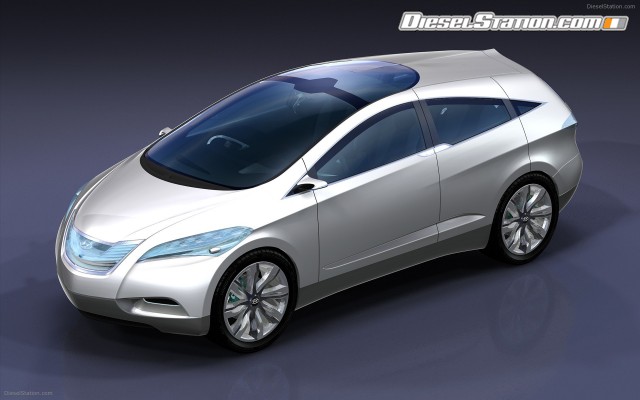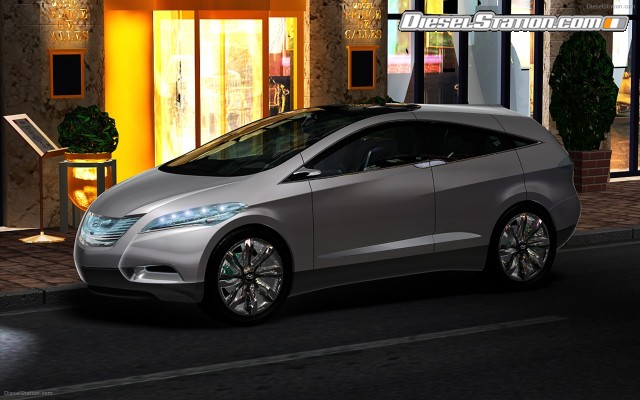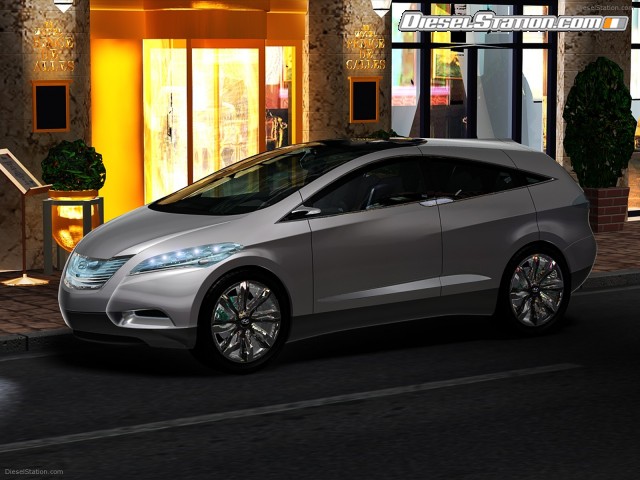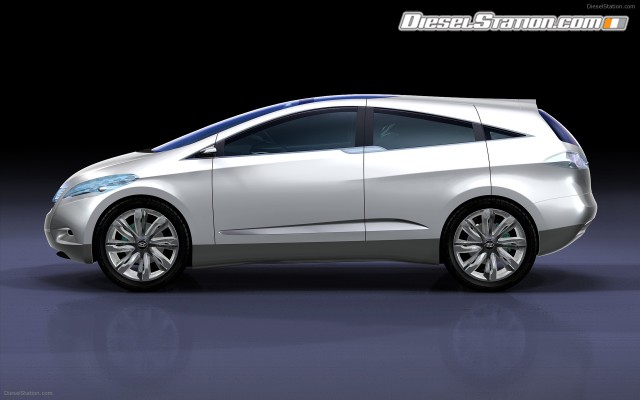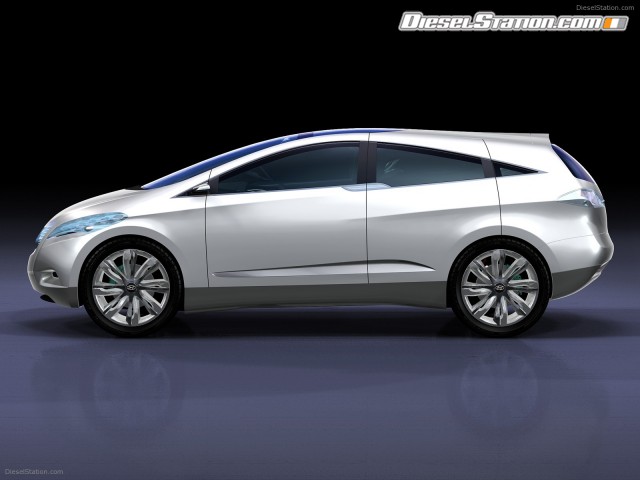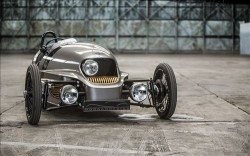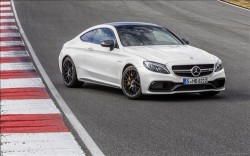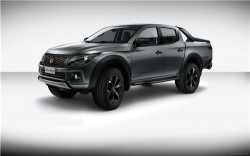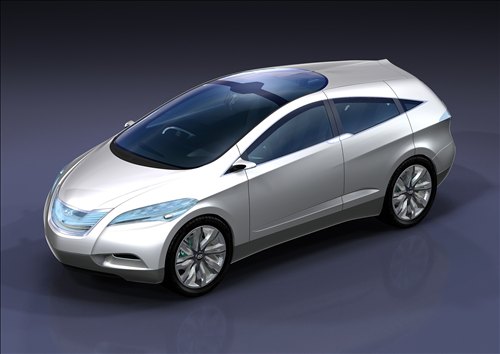The i-Blue is successfully designed as a more compact fuel cell vehicle, while still providing safety, comfort, convenience and driving range of a traditional internal combustion engine vehicle.
HYUNDAI i-Blue FUEL CELL CONCEPT
Concept reveals third-generation fuel cell technology ![]()
Hyundai's new hydrogen-powered, zero-emission concept, the i-Blue Fuel Cell Electric Vehicle (FCEV), debuted in North America at the 100th edition of the Chicago Auto. Developed at Hyundai's Design and Technical Center in Chiba , Japan , the i-Blue concept illustrates the design direction for a future FCEV production model. The all-new i-Blue platform features Hyundai's third-generation fuel cell technology, currently being developed at Hyundai's Eco-Technology Research Institute in Mabuk , Korea .
The i-Blue demonstrates a significant step towards commercialization of Hyundai fuel cell vehicles. Unlike its predecessors which were built on production SUV platforms, the i-Blue features a new, purpose-built 2+2 crossover architecture. The smaller vehicle platform requires even greater engineering sophistication to package the fuel cell.
“The i-Blue is Hyundai's first-ever model designed from the ground up to incorporate fuel cell technology, marking a tremendous leap forward for our R&D program,” said Dr. Hyun-Soon Lee, president of research and development. “Our engineering team has successfully designed a more compact fuel cell vehicle, while still realizing the safety, comfort, convenience and driving range of a traditional internal combustion engine vehicle.”
Hyundai is working toward mass production of hydrogen-powered fuel cell vehicles in the next decade.
POWERED BY THIRD-GENERATION FUEL CELL TECHNOLOGY
The i-Blue is powered by a 100 kW electric engine and fuel cell stack. Fueled with compressed hydrogen (700 bar) stored in a 115-liter tank, i-Blue is capable of running more than 370 miles per refueling and achieves a maximum speed of more than 100 miles per hour.
The i-Blue's fuel cell stack is housed underfloor, not in the engine compartment as in the second-generation Tucson FCEV. This gives the car ideal 50:50 weight distribution for optimal driving and handling dynamics. Furthermore, by moving the fuel stack underfloor, the engine compartment is less densely populated, providing better air flow and cooling. The i-Blue drives with almost no sound yet passionate drivers will be delighted by the acceleration of the i-Blue's powerplant. Like other fuel cell vehicles, i-Blue's only emission is water vapor, fueling Hyundai's dedication to FCEV technology as a viable, environmentally friendly alternative to the internal combustion engine.
CONCEPT
The i-Blue is a sophisticated and futuristic crossover concept sports tourer with the driving comfort of a sedan and the utility functions of a minivan. The i-Blue FCEV has a dynamic and elegant exterior design, resembling TaeKuk, which is based on the philosophy of Ying and Yang. In this philosophy, opposite forces are unified in perfect balance to create something new. The i-Blue's body was styled by unifying two distinct geometric forms – the square and the circle – thereby creating a rhombus-like shape. The i-Blue features a futuristic flow-form interior, which results in a relaxing, stretched-out seating position for the driver and passengers.
HIGH TECHNOLOGY MEETS PASSENGER COMFORT AND SAFETY
i-Blue employs the latest advancements in technology to ensure diving safety. Drivers of the i-Blue will be excited about the innovative, aircraft-like steering wheel that integrates touch-scroll control pads, enabling the driver to keep his hands on the wheel while operating the vehicle's audio-visual systems.
The 3D vision heads-up display (HUD) also adds safety and convenience by providing essential information for the driver at eye level. The Hologram HUD is positioned to minimize the driver's eye movements.
The outside environment is constantly projected through the vehicle's full-surround camera system. Using the latest image processing techniques, the vehicle's monitoring system provides a virtual picture of the vehicle and its surroundings, including hidden obstacles the driver may not see. This technology is particularly useful when changing lanes or parking the vehicle.
Finally, guages and multimedia controls are included in a liquid crystal display. Users have the ability to customize the settings according to their individual needs. Many more future convenience features from Hyundai, such as side- and rear-view monitors, are shown on the i-Blue concept vehicle as well.
EXTERIOR
As a crossover utility vehicle combining the benefits of both a sedan and a SUV, and incorporating a design theme born from the traditional beauty of Korea , i-Blue signals a new vehicle category.
From the hood and including the front fender, A-pillar, cabin and rear fender, the i-Blue's seamless cab-forward body provides perfect balance. From the TaeKuk theme of volume and surface in harmony, the character lines of the front and rear fender add chiseled detail to an otherwise rounded body sculpture.
From the approach, i-Blue borrows design themes from the Hyundai Concept Genesis, introduced at the 2007 New York Auto Show. The grille and headlamps have been expressed in crystal glass to depict the water from the fuel cell system. The powerful image of the rear invokes the wings of an airplane.
Cameras have been installed in the head lamp, rear combination lamp and high mounted stop lamp helping to promote a functional and high-tech design




